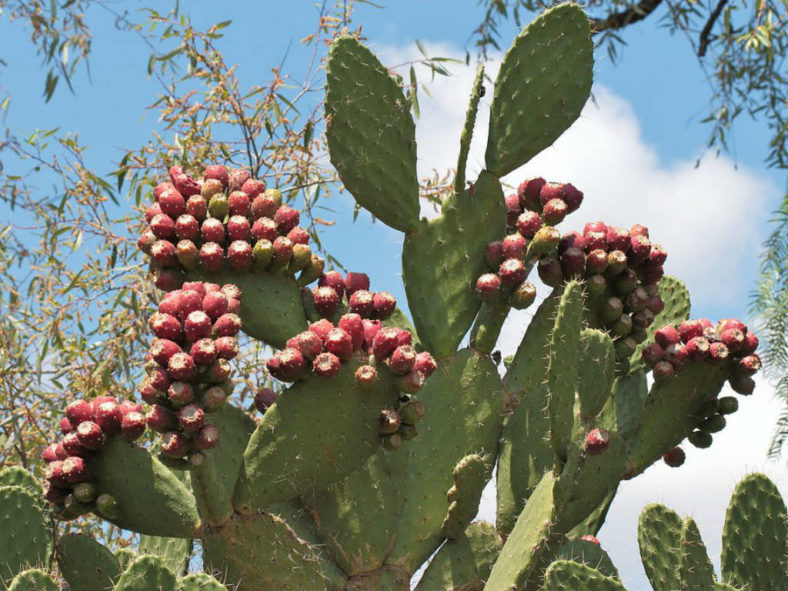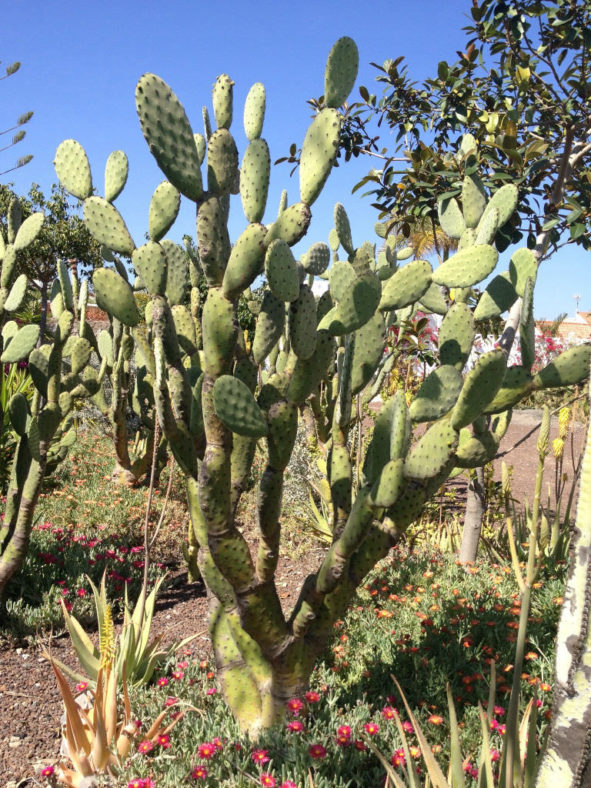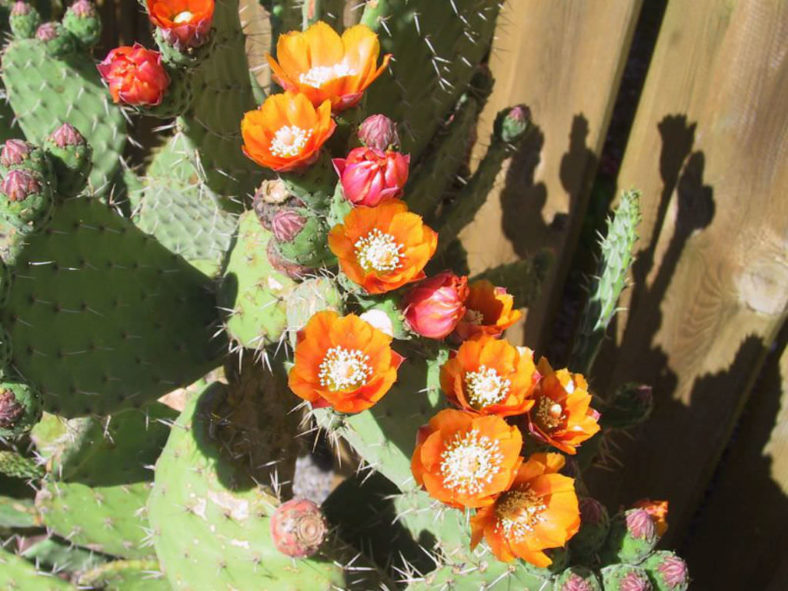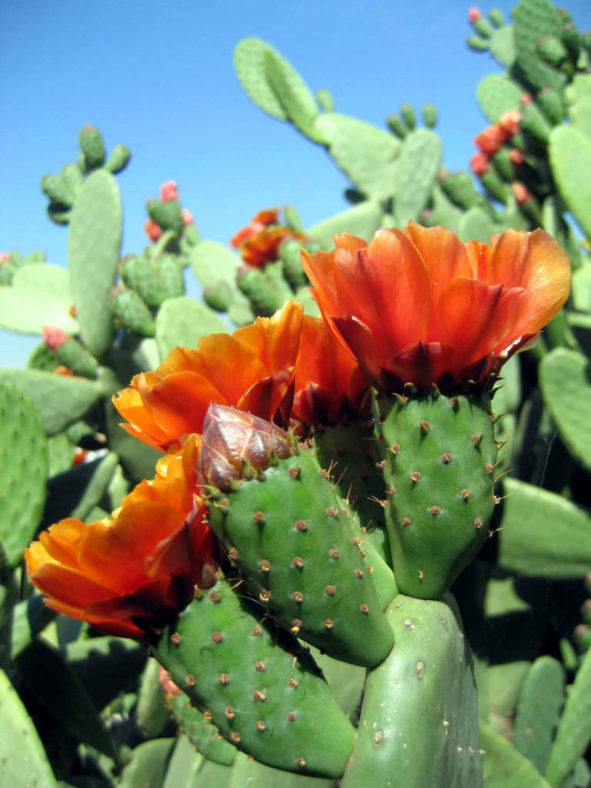Scientific Name
Opuntia tomentosa Salm-Dyck
Common Name(s)
Prickly Pear, Tree Pear, Velvet Opuntia, Velvet Tree Pear, Velvety Tree Pear, Woollyjoint Prickly Pear
Synonym(s)
Opuntia hernandezii, Opuntia rileyi, Opuntia spraguei, Opuntia macdougaliana
Scientific Classification
Family: Cactaceae
Subfamily: Opuntioideae
Tribe: Opuntieae
Genus: Opuntia
Origin
Opuntia tomentosa is endemic to Mexico.
Description
Opuntia tomentosa is a tree-like cactus with a woody main stem and fleshy, dull green, much-branched stems consisting of flattened segments. It can grow up to 26 feet (8 m) tall. The stem segments can reach up to 14 inches (35 cm) in length and 6.4 inches (16 cm) in width. They are velvety, with clusters of yellow glochids. The stem segments are usually spineless but occasionally bear one or a group of two gray spines measuring up to 1 inch (2.5 cm) long. The spines are more prominent on younger plants and tend to be absent on older stem segments.
The flowers are bright orange, usually with reddish markings on the undersides of the outermost petals. They can reach up to 2.2 inches (5.5 cm) in length and 2 inches (5 cm) in diameter. The fleshy fruits can grow up to 2 inches (5 cm) long and 1.4 inches (3.5 cm) in diameter. They are green but turn dull red or purplish-red as they mature and are eaten raw or made into jellies and jams.

Hardiness
USDA hardiness zones 8b to 10b: from 15 °F (−9.4 °C) to 40 °F (+4.4 °C).
How to Grow and Care
Though the large variety of species within the Opuntia genus means different, Prickly Pears may need slightly different care. All are desert cacti that need lots of sun, light, and very little water. So, if you live in a hot, arid area, these plants can generally be planted outside, left alone, and enjoyed.
These cacti will grow just fine in a garden but can also be grown in pots. To repot, ensure the soil is dry, remove the pot, and remove the old soil. After treating any cuts with fungicide, place the cactus in a new pot and backfill it with potting soil. As with a new cutting, ensure not to water a newly repotting Prickly Pear briefly to avoid rotting its roots.
Opuntia can propagate either by cuttings or by seed. To propagate by cuttings, sever pads from a plant and let them dry to heal the wounds. Then, place the plants in dry soil and refrain from watering them until they begin to grow to avoid rotting them.
Learn more at How to Grow and Care for Opuntia.
Links
- Back to genus Opuntia
- Succupedia: Browse succulents by Scientific Name, Common Name, Genus, Family, USDA Hardiness Zone, Origin, or cacti by Genus
Photo Gallery
Click on a photo to see a larger version.


